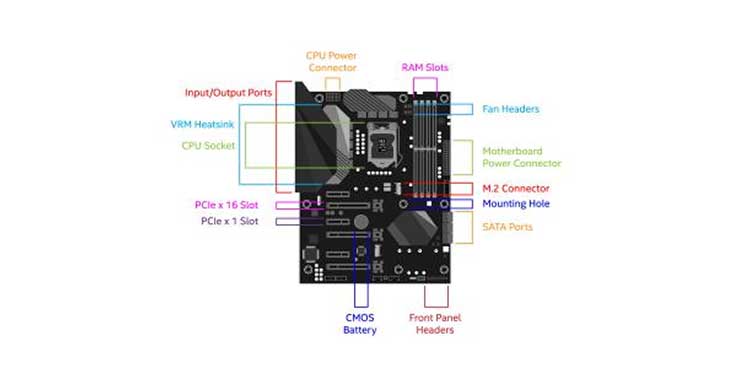Knowing what is inside your computer is beneficial in many ways. And if you just bought a prebuilt computer, you should verify what components you now have.
Check Computer Specs on Windows
Using Device Properties
Using DxDiag
Using System Information
Using Device Manager
Checking System Specs on Ubuntu
Using System Monitor
Using HardInfo
Using lshw or lshw-gtk
Using System Information
Checking System Specs on Mac
Using About This Mac
System Report
Why Should You Know Your PC Specs?
Knowing your PC specifications is important in many ways. What your PC is made of is crucial in terms of how or what it can run.
Software Compatibility
A lot of software and applications have minimum and recommended requirements. This is most commonly found in games or video/photo editing applications. So, if you want to play a game or process photos or videos on your PC, you have to make sure your computer is up for the task.You should always check your specifications and compare them to the recommended specs for the software or app that you want to use.
Time for an Upgrade
Knowing your computer’s components will also help you figure out if it is time to upgrade. For example, if you check your system specifications and your hardware is a lot older than you expected, it might suggest that you need to upgrade your system with better hardware. Knowing your specs will also help identify problematic hardware components that might be a bottleneck and need to be replaced.
TroubleShooting
You will most definitely need to know your computer specifications if you run into issues concerning hardware or software problems. Without knowing what components you have inside your system, it’ll be quite a nightmare to pinpoint the exact cause of any issues.
PC Valuation
If you ever feel like doing a valuation of your computer, either for selling it away, replacing it or any other reason, you will want to know what each of your system components are and then find out its individual value. This is important when you want to buy a used PC as well.
Being a Better Consumer
A lot of us are used to buying laptops or prebuilt computers. A lot of sellers do not list their full specifications at the time of purchase. This is even more important when making purchases from the used PC market, as the seller might have made some changes under the hood that cannot be seen from the outside. To become a better consumer, you need to know what is inside the system you are buying. Making smart choices for computer purchases instead of buying what is labeled as ‘fast’ or ‘next-gen’ is important to your wallet health and system longevity.
How to Check Your PC Specs Online?
Specifications of prebuilt PCs and laptops are usually well documented by their manufacturer and are accessible on their website. You will need to find out your system manufacturer and head to their official website. Then search your product Serial Number to view its stock specs online. A laptop has its serial number printed on its bottom side on a sticker. A prebuilt PC may or may not have a serial sticker on its Casing, but the customer copy of its purchase bill will usually contain it. If you have the original packaging ( or an image of the sticker), it will also contain the serial number of your system.
How to Check What CPU You Have?
The CPU name will be available in any of the system information utilities shown above. If you want to do a physical check:
How to Check What GPU You Have?
The GPU might not be shown by basic system information but will usually be found under the Display section of most system information utilities. If you want to do a physical check:
How to Check What RAM You Have?
The RAM specifications should also be available in basic system utilities. If you want to do a physical check:
How to Check What Motherboard You Have?
The motherboard might not be shown by basic system information but will usually be found under the Motherboard section of most system information utilities. You can also press the dedicated BIOS key during startup to boot into BIOS and check your motherboard version there. If you want to do a physical check:You usually don’t have to check for a laptop motherboard. A quick google search of the laptop model or serial number into its official manufacturer’s website will give you the motherboard specifications.
How to Check What Storage You Have?
The storage of any device will be shown when you open This PC on windows. If not, the Drive manager can also help you look at any drives you have and their specifications.Otherwise, any system utility will be able to show you exactly what model of drive you are using. If you want to do a physical check:
How to Check and Verify Your System Specifications?
If you are buying or have already bought a used computer or laptop, it is recommended to verify the actual specifications of your system (preferably before the purchase). The best way is to see each sticker of the system’s components since the seller can trick the operating system into representing falsified specifications. A laser-etched CPU engraving is even more difficult to falsify. Whereas a simple edit of system files can make the operating system report falsified specifications. The easier way is the BIOS, which is more reliable for such reports than reports within the OS.It’s recommended to verify for laptop systems and prebuilt PCs by heading over to the manufacturer’s website and type in the product serial number to view its exact stock specifications online.




















